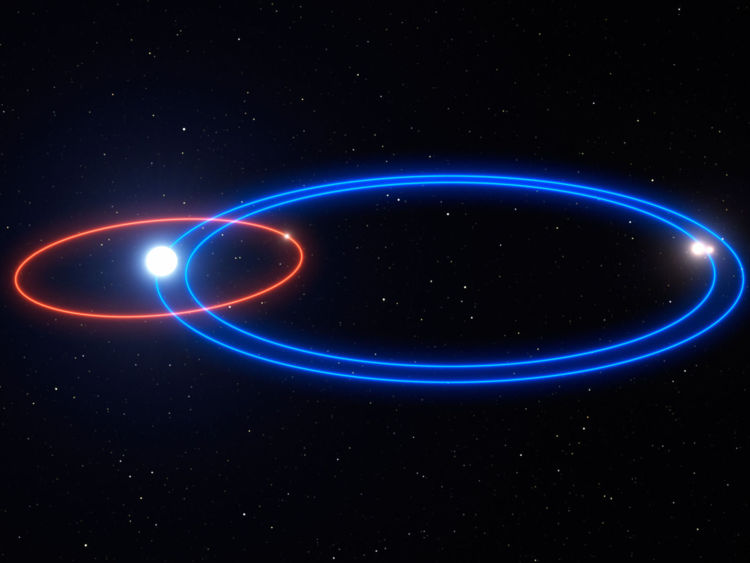A gaseous planet with three suns and a mass four times that of Jupiter has been spotted by astronomers.
It means that an observer on the planet – known as HD 131399Ab – would either experience constant daylight or triple sunrises and sunsets each day, depending on the season.
Scientists said they were surprised that a world could survive at all, because the instability of its orbit could have ejected it into deep space.
The planet sits in the constellation of Centaurus, and follows a wide orbital path around the brightest of the three stars.
The other two stars, which twirl around each other, lie outside the planet’s orbit.
They also circle the central star, which is believed to be 80% bigger than the Sun.
HD 131399Ab is one of the few planets outside the Solar System which has been directly imaged by astronomers.
Astronomer Kevin Wagner, from the University of Arizona, who identified the planet, said: “For about half of the planet’s orbit, which lasts 550 Earth-years, three stars are visible in the sky, the fainter two always much closer together, and changing in apparent separation from the brightest star throughout the year.
“For much of the planet’s year the stars appear close together, giving it a familiar night-side and day-side with a unique triple-sunset and sunrise each day.
“As the planet orbits and the stars grow further apart each day, they reach a point where the setting of one coincides with the rising of the other – at which point the planet is in near-constant daytime for about one quarter of its orbit, or roughly 140 Earth-years.”
The planet, which is around 16 million years old, has been described in the latest edition of the Science journal.
It has a mass equivalent to four Jupiters and a surface temperature of around 580C.
PhD student Mr Wagner said: “It is not clear how this planet ended up on its wide orbit in this extreme system, and we can’t say yet what this means for our broader understanding of the types of planetary systems, but it shows that there is more variety out there than many would have deemed possible.”
Christopher B. Taub













